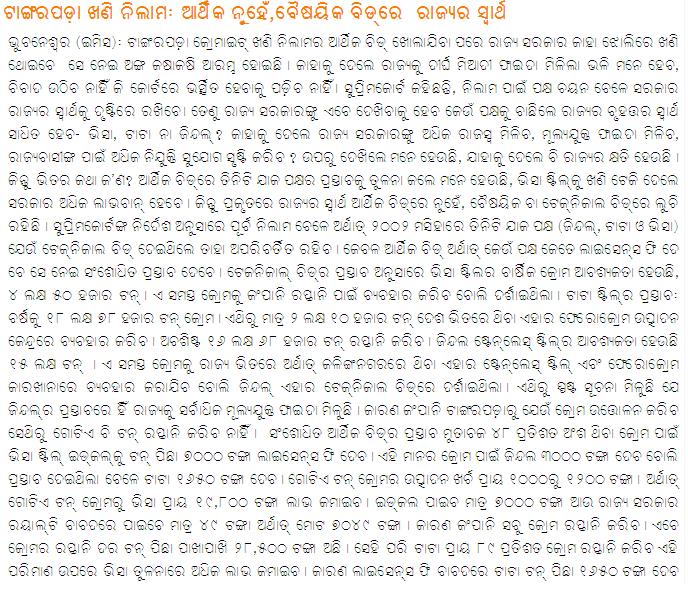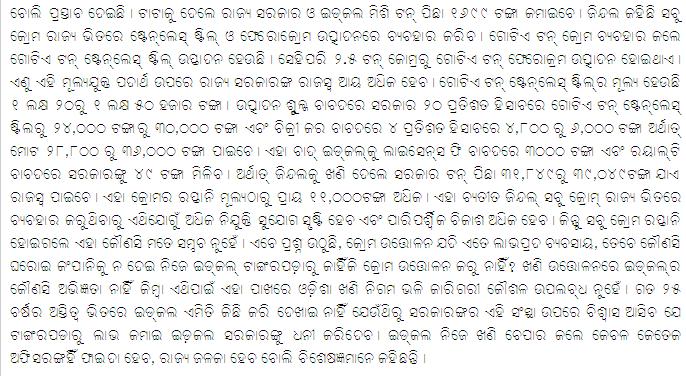… Polavaram dam, a dream project for the state and a potential flashpoint involving its neighbours, Orissa and Chhattisgarh. The idea of the dam was first floated in the early 1940s but it remained a dream for the state government, an ambitious venture that stayed on election manifestos. So for years, the Godavari flowed almost unharnessed, emptying itself into the Bay of Bengal. It was only when Y S Rajasekhara Reddy took charge in the state that the Polavaram project was revived, as part of his Jalayagnam programme.
The 150-feet-high dam, called the Polavaram Indira Sagar Dam, will create a reservoir spreading over the three districts of West Godavari, East Godavari and Khammam. The tail-end of this reservoir is more than 150 km away, touching Bastar in Chhattisgarh and Malkangiri in Orissa. The dam will harness 170 thousand million cubic feet water (tmcft), through two canals that spread out as arms on either side: the right canal which will take 80 tmcft to river Krishna and the left canal, which will help irrigate 7.2 lakh acres in the north coastal Andhra districts and take 23 tmcft to Visakhapatnam, which faces a perennial water shortage. Work on the dam has not yet begun but the cranes are furiously at work on the left and right canals.
The dam, a Rs 11,000-crore project, will be an earth-cum-rock fill structure as the soil isn’t rocky enough for a concrete dam.
The Polavaram dream
For nearly 60 years, Polavaram remained on paper, dogged by controversies of displacement. Now, the state’s neighbours, Orissa and Chhattisgarh, have dragged it to the Supreme Court, saying the dam would inundate several parts of their states. According to government estimates, the dam will submerge villages in the three Andhra districts of West Godavari, East Godavari and Khammam, in Bastar in Chhattisgarh and in Malkangiri, Orissa. Besides, nearly two lakh people will be displaced.
But in a state that’s divided over the Telangana issue, the dam has brought together all political parties, including Chiranjeevi’s Praja Rajyam and Chandrababu Naidu’s TDP. With the Environment Ministry having cleared the project on September 5, the government is in a hurry to start work.
“This is an ambitious project that will solve the irrigation and drinking water problems over a large area. Our relief and rehabilitation package is the best in the country.
… the state government says it wants to finish the project in four years. In its zeal to take the project ahead, the state government has given some lofty assurances to the Centre, including the construction of a 60-km-long, 45-feet-high embankment to prevent flooding in neighbouring states.
The concerns
Like all big dams, Polavaram is dogged by the dam versus displacement problem. Chhattisgarh and Orissa, the two states that are opposed to the dam, say the project will submerge large tracts of tribal and forest land and displace primitive tribals who are dependent on the forests. Both states say that if the project has to go ahead, it has to be redesigned and fresh assessments and estimates made. Both states have also rejected the Andhra Pradesh government’s proposal to construct a 30-km-long embankment at the reservoir’s tail-end to prevent submergence in those states.
Orissa is also upset that the environment ministry has cleared Polavaram when its own big-ticket projects, like Niyamgiri, weren’t.
Orissa says 10 villages in Motu tehsil, nine of them dominated by Koya tribes, will be submerged in Malkangiri district. “A population of 6,000 is going to be affected, which includes Scheduled Tribes and Primitive Tribes. Andhra proposes to build an embankment to prevent these 10 villages from getting submerged. But that is unrealistic. The embankment has to be 30 km long and 45 feet high and has to be constructed inside Orissa. Who is going to acquire land to build this wall? What is the environmental impact? Has any assessment been done? A bigger question is, if an embankment is built, where will rain and flood water go from Orissa’s side? It will end up flooding 100 other villages in Malkangiri,” says Suresh Chandra Mahapatra, Commissioner and Secretary, Water Resources Department, Orissa.
In Konta tehsil of Bastar in Chhattisgarh, 23 villages will be submerged. Bastar Commissioner B Srinivasulu too calls the embankment “a far-fetched idea”.
While there is no political opposition to the dam in Andhra Pradesh, environmentalists and human rights activists are opposed to it, saying it will displace more people than the Sardar Sarovar Project on the Narmada river.
In Andhra, 277 villages in Khammam, East Godavari and West Godavari districts, parts of the Papikonda hills and wildlife sanctuary and 3,000 acres of forest land will go down under. The activists say the livelihood of thousands of Godavari fishermen is at stake and the primitive Koya and Kondareddi tribes in Khammam district would be displaced.
… There are other worries too. The Central Water Commission had approved the design based on initial estimates that the spillway (the structure that provides the controlled release of excess water) could withstand 36 lakh cusecs of flood discharge. It was later revised to 50 lakh cusecs. But recent rainfall trends and flood history predict a peak flood of 80 to 90 lakh cusecs and that could wash the dam away, says T Hanumantha Rao, former chief engineer and UN consultant.
Rao says he is not against the Polavaram project but warns against the flooding. “Andhra needs a project like Polavaram. But large earthen dams are prone to breaches. If the dam overflows, it will cause breaches. Polavaram is located at the end of the river where the peak discharge of the river occurs. Only four other rivers in the world have flood peaks more than Godavari and none of them have earthen dams where such peak flood flows occur,” he says.
Last year, two earthen dams in Andhra developed breaches during the monsoons—Gundlavavu in Warangal and Palamvavu in Khammam district.
Then, there is the debate over the height of the dam. While Orissa and Chhattisgarh are objecting to the proposed 150-feet-high dam, Andhra says the purpose of the dam is defeated if it is anything less.


